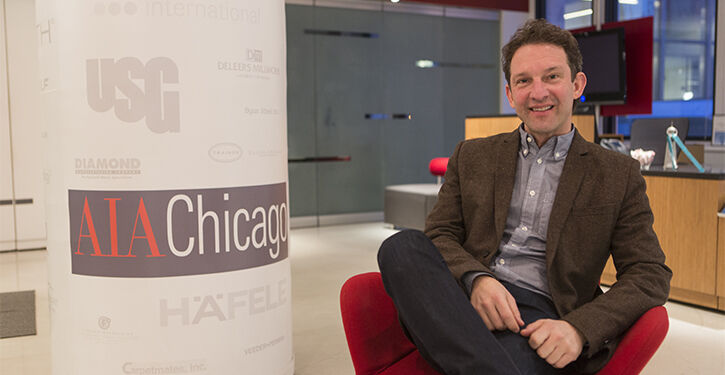
Q&A with Zurich Esposito

By Jac Kuntz (MA 2016)
Zurich Esposito (MS 1995) graduated from the School of the Art Institute of Chicago (SAIC) as a member of the first graduating class of the Master of Science program in Historic Preservation. He now holds the position of executive vice president for the Chicago chapter of the American Institute of Architecture (AIA), the second-largest branch of the AIA in the nation.
What led you to historic preservation?
As an undergraduate, I took many art history courses and was especially fond of the history of architecture and design. I went on to pursue a career in a more traditional business field but decided I wanted a career I felt more connected to personally. SAIC was introducing a historic preservation program at that time, and I was thrilled when my application was accepted.
Describe your experience at SAIC.
SAIC was a wonderful and memorable time of my life. SAIC is unique in that it affords students a level of creative flexibility. That aspect of the school I found at first intimidating but ultimately, rewarding. I can wholeheartedly say the program prepared me confidently for the career I have now. The relationships I built have endured throughout my career. Many of the design professionals I work with I met at SAIC—members of the AIA and organizations we collaborate with. The network I developed while in graduate school is remarkable and a huge advantage for my career. Immeasurable.
What student opportunities for exploration did you take advantage of?
The program required an internship, but it was not laid out for you. The expectation was that you would develop and identify an opportunity that would fit into learning or career building objectives that were meaningful to you. At the time, I was interested in learning more about masonry construction, so I committed to a restoration project in a small village in Southwestern France. It provided hands-on experience I would not have learned simply by reading a book. Those kinds of experiences are not unusual for SAIC students to pursue. SAIC encouraged and expected that.
SAIC emphasizes interdisciplinary education. How does that correlate with what you do?
The field of architecture is diverse. Chicago's AIA members all have careers in different disciplines of design. SAIC gave me an understanding of those aspects, what our members do, from building structure to interior design.
Describe your role and experience as Executive Vice President of AIA.
My role involves overseeing various aspects of the organization including our continuing education programs, publications, outreach to the public and school groups, and all of the many events and competitions we hold. There are very few cities in the world in which working in the field of architecture is as rewarding as it is in Chicago. Architecture is a point of pride here.
The Chicago branch recently hosted the national AIA convention, what did that mean for Chicago?
It was a great opportunity to demonstrate the leading role Chicago plays in the design community and the wealth of great design that exists here. We have a wonderful design legacy from a historic perspective but also new, and progressive design that is keeping that legacy alive. Chicago is a place for people to learn and discuss architecture as well as celebrate it.
What has the AIA achieved eight years you have been there?
One thing developed during my time at the AIA is Chicago Architect, a magazine produced and published by AIA Chicago and distributed bimonthly to 5,000 architects and designers. It is a relevant publication and great reflection of our community. We also facilitated the publication of the third edition of the AIA Guide to Chicago in 2014.
How does the AIA Chicago chapter address historic preservation in the region?
We have a very active Historic Resources committee, responsible for guiding the development of continuing education courses for architects that relate to historic architecture and design and advising our Board of Directors. They recently supported the preservation of the now-demolished Prentice Hospital, a masterpiece of one of our late members, Bertrand Goldberg.
What historic preservation projects have you played a role in?
I served as president of the Chicago Bungalow Association. It is a terrific delegate agency for the city of Chicago, educating the public on how Chicago bungalow neighborhoods are a historic resource and asset to our urban fabric. The housing style represents nearly one-third of the city's single-family housing stock, and makes up about 10 designated historic districts of Chicago. The organization has also employed many SAIC graduates of the Historic Preservation program. That is the most rewarding work I have personally been involved in.
You have been invited back to SAIC to lecture on the AIA code of ethics. Why is an education that stresses the value of ethics in architecture important?
Architecture carries a lot of responsibility. Community and welfare are goals that all architects should uphold. The AIA has a prescribed code of ethics that outlines expected behavior of high performing architects of integrity. The work architects do relies heavily on public trust.
What is the most important skill required for success in this field?
Patience and the ability to listen.
